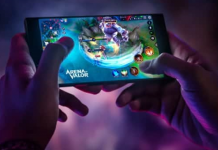RCS (Rich Communication Services) is a new messaging protocol that is designed to replace the outdated SMS/MMS system on Android devices. It offers a much more feature-rich and interactive messaging experience compared to regular text messages.
Contents
About RCS Messaging
Some key things to know about RCS:
- RCS is the evolution of SMS/MMS and the standard messaging protocol pushed by Google and Android device makers as the future of messaging.
- It is supported natively in the Messages app on Android without needing to download additional apps.
- RCS works over mobile data or Wi-Fi and allows features like high-res photo/video sharing, read receipts, typing indicators, group chats, etc.
- It is universal and interoperable across devices and operating systems, unlike platform-specific services like iMessage.
Key Features of RCS
Here are some of the major features and capabilities offered by RCS messaging:
Media Sharing
Send and receive high-quality photos, videos, and files up to 100MB in size without compression. Far richer than SMS.
Read Receipts
See when your messages have been delivered and read by recipients.
Typing Indicators
See when the other person is typing, so you know to expect a reply.
Group Chats
Have seamless group conversations with up to 100 participants. Customize group icon, subject, add admins.
Enhanced Security
RCS supports end-to-end encryption for secure messaging. Verified business profiles also help build user trust.
Integrations & Chatbots
RCS enables integrations with third-party services like payments, transportation, etc. Bots can automate conversations.
Multimedia Content
Send and receive interactive multimedia like high-res images, GIFs, audio messages, location sharing, etc.
RCS vs SMS/MMS Messaging
RCS messaging is far more advanced compared to old SMS/MMS in the following ways:
- No character limits or text-only restraints like SMS
- Supports rich media sharing natively
- Deliverability receipts, read statuses, and typing indicators
- Works over mobile data/WiFi instead of traditional cellular voice networks
- Bi-directional conversations with two-way enterprise communication
- Enhanced security features including encryption
However, SMS/MMS will remain as a fallback option if the receiving device does not support RCS.
How to Set Up RCS Messaging on Android
Enabling RCS messaging is quite straightforward on Android devices:
- Make sure your device is running Android 5 or later.
- Use the pre-installed Messages app by Google. RCS is integrated in it.
- If prompts appear to enable “Chat Features”, agree to those prompts.
- If your carrier supports Universal Profile RCS, it will automatically be enabled.
- Some carriers may require registering your phone number. Follow any on-screen setup instructions.
Once enabled, you can start enjoying a rich messaging experience with other RCS users. It will fall back to SMS/MMS automatically if needed.
The Future of RCS
While RCS adoption was slow initially, momentum is rapidly building now:
- Over 1 billion monthly active users globally on RCS currently
- Google and Samsung providing robust RCS support on Android devices
- Carriers like Verizon, AT&T rolling out Universal Profile RCS networks
- Apple has also announced plans to adopt RCS in iOS in the future
This means RCS messaging is expected to become the universal standard for messaging across mobile operating systems, though SMS/MMS may never fully go away. The future is bright for interactive and multimedia messaging with RCS!
Conclusion
RCS messaging represents the next generation of texting on Android devices. With support for rich media, enhanced features, and interoperability across operating systems, it delivers a major upgrade over existing SMS/MMS. As adoption spreads, RCS aims to become the default messaging standard across platforms.






































 Online casino
Online casino
